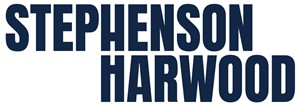University: King’s College London
Degree: Law
Year made partner: 2019
Position: Partner
Department: Intellectual property, technology and data
Pronouns: She/her
Was your goal always to make partner?
My goal wasn’t to make partner at all. At first, I saw the role as more sales focused, which didn’t appeal to me. In fact, I left my previous firm largely because I’d reached a stage where partnership seemed like the only path forward. I enjoyed being a senior associate and thought that was the path I wanted to stay on. I moved to Stephenson Harwood LLP because it offered the chance to focus on the work that I genuinely enjoyed, while remaining a senior associate.
What did the path to partner look like for you?
After about a year at Stephenson Harwood, a few partners began asking why I wasn’t considering the partnership route. Several suggested that I’d be a great partner because of my skills and experience. However, I still felt that becoming a partner would shift my focus too much towards sales, whereas I preferred staying close to the legal work and deals. The sales aspect, as I saw it, just didn’t come naturally to me. The partners at Stephenson Harwood were really encouraging and helped to shift my perspective on what it meant to be a partner. They helped me to understand that being a good partner is about building and maintaining strong client relationships. Clients may move between companies, but it’s the consistent connection that matters. That was what flipped a switch in my head. I realised how much I enjoyed building client relationships, and I began to learn more about discussing pricing effectively, which is a core element of the role. Through that encouragement, my perspective changed and I was then taken through the partnership process.
How does the work you do as partner differ to the work you did as a senior associate?
When I was an associate, my focus was billable hours and delivering pieces of work. Whereas as a partner, much more of my focus is on supporting associates in my team as they lead on the work, strengthening client relationships and bringing new pieces of work into the firm. To do that, you need to spend time with your clients and consider what’s coming next in their pipeline. I do think the landscape is evolving and there’s a lot more scope for junior lawyers to get involved in business development and play a broader role in the firm – the step change between an associate and partner is less stark. Law firms are increasingly equipping junior lawyers with the tools and insight they need to thrive as they become more senior. At Stephenson Harwood, there’s a shared understanding that being an excellent lawyer goes beyond technical expertise – it’s also about business development, client relationships and understanding the commercial context you’re working in. As a result, when lawyers start thinking about progressing to partner, it no longer feels like such a big leap.
Please can you outline your area of expertise?
I work on intellectual property (IP) focused transactions and contracts, including licensing arrangements for trademarks, patents and products based in copyright. Many of my clients are biotech companies and pharmaceutical companies. Often, these businesses work on collaborative agreements when developing, for example, a new drug because this process can involve a number of technologies and IP from different companies. I work with clients to draft and negotiate the terms of those long-term licensing agreements, which then can last for more than 20 years, as that can be how long it takes to research, develop and commercialise a pharmaceutical product. I also work with clients in the consumer goods industry, such as companies licensing their trademarks or using trademarks to publicise their brands to the public.
What are the most challenging and rewarding aspects of life as a lawyer?
Client work and relationships are the most challenging and rewarding aspects of the role. Some clients are genuinely fascinating, and working with them can feel like being in the trenches together. Getting a deal over the line is incredibly rewarding – especially when you know you’ve delivered exactly what they needed, often under tight time pressures. That's also one of the biggest challenges! You need to keep clients happy and juggle the demands of multiple clients. You want every client to feel like they’re your top priority.
Everyone in the firm is looking for new business, what does this look like? How does it develop over time?
When I was a junior lawyer, many people emphasised the importance of building a network. People would say, “connect with those you're training with – they’ll be the general counsels of the future”. Many peers in private practice will progress to in-house roles, so having a strong foundation from the start allows you to grow your clients later, based on genuine, trusted working relationships. You’ve got to play the long game! A broad network across different companies not only helps generate work, but it also leads to recommendations.
Business development isn’t just about maintaining existing relationships, it’s also about meeting new people. As I work in the life sciences sector, I'll go to various industry events to make new connections. When I meet someone, I ask myself: How could I help them?
What makes your firm stand out?
At Stephenson Harwood, we’re team players. We collaborate closely with our clients and we’re there to help. Within the firm, we also work together to ensure that everyone’s supported, and that junior lawyers have the opportunity to grow and fulfil their potential.
Describe the firm in three words?
Ambitious, collaborative and friendly.
What’s your desert island disc?
Never Forget by Take That. It reminds me of growing up and hanging out with friends. Take That was also one of my first concerts with my sister.


